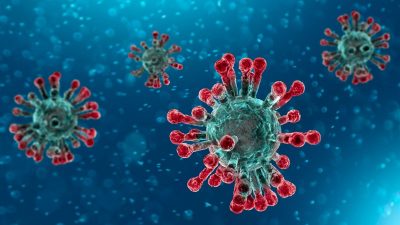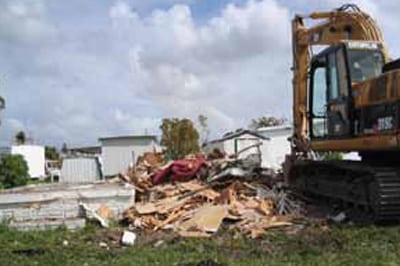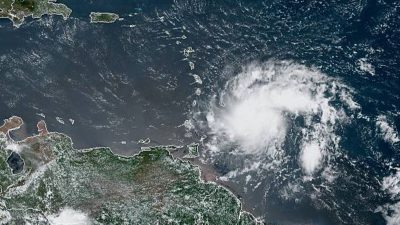Below are descriptions of technologies used in site remediation. They are divided into sections. Click on the section that you are interested in to read more.
Remediation Technology Types
Air Sparging involves the injection of air or oxygen through a contaminated aquifer to remove volatile and semivolatile organic contaminants by volatilization. The injected air helps to flush the contaminants into the unsaturated zone for treatment.
Bioreactor Landfills rapidly transform, degrade and stabilize organic waste through the addition of liquid and air enhance microbial processes.
Bioremediation uses microorganisms to degrade organic contaminants in soil, groundwater, sludge, and solids. The microorganisms break down contaminants by using them as an energy source or cometabolizing them with an energy source.
Electrokinetics applies low-intensity direct current through the soil between ceramic electrodes that are divided into a cathode array and an anode array. This current mobilizes charged species, causing ions and water to move toward the electrodes, and removal of contaminants at the electrode may be accomplished by several methods.
Evapotranspiration Covers utilize natural processes to manage water precipitating on municipal landfills, hazardous and industrial waste landfills to contain waste.
Environmental Fracturing technologies enhance or create openings in bedrock or soil with low effective porosity, such as clay, to help soil and groundwater cleanup methods work better.
Ground-Water Circulating Wells create a three-dimensional groundwater circulation pattern that can provide subsurface remediation inside a well, in the aquifer or both. Groundwater is drawn into a well through one screened section and is pumped through the well to a second screened section where it is reintroduced to the aquifer.
In Situ Chemical Reduction places a reductant or reductant-generating material in the subsurface to degrade toxic organic compounds to potentially nontoxic or less toxic compounds. It immobilizes metals by adsorption or precipitation and degrades non-metallic oxyanions.
In Situ Flushing floods a zone of contamination with an appropriate solution to remove the contaminant from the soil. Contaminants are mobilized by solubilization, the formation of emulsions or a chemical reaction with the flushing solutions and brought to the surface for disposal, recirculation or on-site treatment and reinjection.
In Situ Oxidation typically involves reduction/oxidation (redox) reactions that chemically convert hazardous compounds to nonhazardous or less toxic compounds that are more stable, less mobile or inert.
Multi-Phase Extraction uses a vacuum system, sometimes combined with a downhole pump, to remove various combinations of contaminated groundwater, separate-phase petroleum product and vapors from the subsurface. The system lowers the water table around the well, exposing more of the formation for vapor extraction.
Nanoscale Materials for Environmental Site Remediation have been developed and used to remediate contaminated soil and groundwater, such as sites contaminated by chlorinated solvents or oil spills. Nanoscale materials can be highly reactive in part because of the large surface area to volume ratio and the presence of a larger number of reactive sites.
Natural Attenuation relies on natural processes to clean up or attenuate pollution in soil and groundwater. Natural attenuation occurs at most polluted sites. However, the right conditions must exist underground to clean sites properly.
Remediation Optimization uses defined approaches to improve the effectiveness and efficiency of an environmental remedy. Optimization approaches include site-wide optimization reviews, statistical evaluation tools, consideration of emerging technologies, review of operating system costs and the identification of cost reduction methods without loss of protectiveness.
Permeable Reactive Barriers are subsurface emplacements of reactive materials through which a dissolved contaminant plume must move as it flows, typically under natural gradient. Treated water exits the other side of the permeable reactive barrier.
Phytotechnologies are broadly defined as the use of vegetation to address contaminants in soil, sediment, surface water, and groundwater. Cleanup objectives for phytotechnologies can be contaminant removal and destruction, control and containment or both.
Soil Washing separates contaminants sorbed onto fine soil particles from bulk soil in a water-based system based on particle size. Soils and wash water are mixed in a tank or other treatment unit and usually separated using gravity settling.
Soil Vapor Extraction applies a vacuum to unsaturated zone soil to induce the controlled flow of air and remove volatile and some semivolatile organic contaminants from the soil.
Solidification encapsulates waste to form a solid material, coat the waste with low-permeability materials to restrict contaminant migration or both. Solidification can be accomplished by mechanical processes or by a chemical reaction between waste and binding reagents, such as cement, kiln dust, or lime/fly ash.
Solvent Extraction uses an organic solvent to separate organic and metal contaminants from soil. The solvent is mixed with contaminated soil in an extraction unit and then passed through a separator, where the contaminants and extractant are separated from the soil.
Ex Situ Thermal Treatment generally involves the destruction or removal of contaminants through exposure to high temperature in treatment cells, combustion chambers or other means. Contaminated media is contained during the remediation process.
In Situ Thermal Treatment includes many different methods and combinations of techniques to apply heat to polluted soil, groundwater or both. The heat can destroy or volatilize organic chemicals, and the gases can be extracted through collection wells for capture and cleanup in a treatment unit.
Contaminants
Exposure to higher than average levels of arsenic occurs mostly in the workplace, near hazardous waste sites or in areas with high natural levels. At high levels, inorganic arsenic can cause death. Exposure to lower levels for a long time can cause a discoloration of the skin and the appearance of small corns or warts.
Exposure to chromium occurs from ingesting contaminated food or drinking water or breathing contaminated workplace air. Chromium VI at high levels can damage the nose and cause cancer. Ingesting high levels of chromium VI may result in anemia or damage to the stomach or intestines.
Exposure to 1,4-dioxane occurs from breathing contaminated air, ingestion of contaminated food and drinking water and dermal contact with products such as cosmetics that may contain small amounts of 1,4-dioxane. Exposure to high levels of 1,4-dioxane in the air can result in a nasal cavity, liver and kidney damage. Ingestion or dermal contact with high levels of 1,4-dioxane can result in liver and kidney damage.
Exposure to dioxins occurs mainly from eating food that contains the chemicals. One chemical in this group, 2,3,7,8-tetrachlorodibenzo-p-dioxin or 2,3,7,8-TCDD, has been shown to be very toxic in animal studies. It causes effects on the skin and may cause cancer in people.
Exposure to mercury occurs from breathing contaminated air, ingesting contaminated water and food and having dental and medical treatments. Mercury, at high levels, may damage the brain, kidneys, and developing fetus.
Methyl tertiary butyl ether (MTBE) is a flammable liquid that is used as an additive in unleaded gasoline. Drinking or breathing MTBE may cause nausea, nose and throat irritation, and nervous system effects.
Solid perchlorates can be very reactive chemicals that are used mainly in fireworks, explosives and rocket motors. Consumption of food and water containing perchlorates are the most relevant routes of exposure for the general population. High levels of perchlorates can affect the thyroid gland, which in turn can alter the function of many organs in the body. The fetus and young children can be especially susceptible.
Persistent organic pollutants (POPs) are toxic chemicals that originate from man-made sources associated with the production, use, and disposal of certain organic chemicals. POPs are associated with serious human health problems, including cancer, neurological damage, birth defects, sterility, and immune system defects. Chronic exposure to low doses of certain POPs may affect the immune and reproductive systems. Exposure to high levels of certain POPs can cause serious health effects or death.
Polychlorinated biphenyls (PCBs) are a mixture of individual chemicals that are no longer produced in the United States but are still found in the environment. Health effects that have been associated with exposure to PCBs include acne-like skin conditions in adults and neurobehavioral and immunological changes in children. PCBs are known to cause cancer in animals.
Trichloroethylene (TCE) is used as a solvent for cleaning metal parts. Exposure to very high concentrations of trichloroethylene can cause dizziness, headaches, sleepiness, incoordination, confusion, nausea, unconsciousness, and even death. The Environmental Protection Agency (EPA) and the International Agency for Research on Cancer (IARC) classify trichloroethylene as a human carcinogen.




